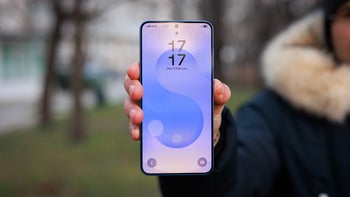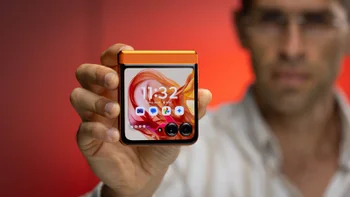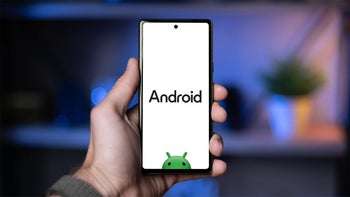AI Translation: the evolution so far, and where we are headed
Timekettle outlines the different stages of AI translation, and what the future holds

Advertorial by Timekettle: the opinions expressed in this story may not reflect the positions of PhoneArena!
Bi-Directional Simultaneous Translation: Why It’s Challenging
The goal of bi-directional simultaneous translation is to allow both speakers to communicate fluidly and with minimal delay—just like talking in your native language. But achieving this is no easy feat. At a minimum, the system must be able to:
- Capture speech clearly,
- Translate it accurately,
- And deliver the result fast.
Unlike many AI earbuds products that offer translation as a bonus feature, Timekettle has built its entire product ecosystem around solving the toughest challenges in cross-language communication. In a normal one-on-one conversation between two people, for example: the earbuds must isolate the speakers’ voice while filtering out surrounding noise—something standard noise cancellation can’t handle.
What AI Large Models Bring to the Table
Accurate translation and low latency are just as important as clean voice capturing. To elevate real-time translation experience, Timekettle has integrated AI large language models (LLMs) into its devices, crucial in tackling some of the long-standing pain points in the field.
Similarly, phonetic confusion can be a major issue. Phrases in Chinese like “双人同传” (translated to “two-way interpretation” in English) and “双人同床” (“two people sharing a bed” in English) sound almost the same but have entirely different meanings and can be seriously confusing when translated wrong. Without high-level acoustic and semantic modeling, such errors are common. Timekettle’s LLM-enhanced system can recognize these nuances and correct them before delivering the final results.
Faster, Smarter, More Human-Like
To ensure smooth conversations, the system must also filter out unnecessary inputs — like pauses, hesitations, and repeated words — that could slow down or clutter the translation. Timekettle’s large model does just that, extracting only the meaningful content to be translated.
More importantly, thanks to ongoing model optimization, the translation latency has been reduced by approximately 20%. While that may not sound like a massive improvement on paper, even a 1–2 seconds cut in latency would make a significant difference in a face-to-face conversation to make it flow more naturally.
The Five-stage Classification of AI Translation
What would the realization of AI simultaneous interpretation mean for the future of human interpreters — will it eventually replace human interpretation? Timekettle has always been navigating a future trajectory for the industry. Drawing inspiration from the classification framework used in the autonomous driving industry, it has introduced one for AI translation, charting a clear roadmap for the future development for the industry.
L1 - Early stage translation. Simple electronic translators or the first versions of Google Translate. Text input only. This level translates word-for-word or very basic pre-baked phrases only, nothing close to a continuous experience.
L2 - Context-aware translation. With the help of Neural Machine Translation and Natural Language Processing (NLP), voice input is now possible. It’s also capable of translating longer phrases, but it’s best if they are simple. It still requires you to take turns and feels slow and robotic.
L3 - Bi-directional simultaneous translation achieved by Automatic Speech Recognition (ASR), Neural Machine Translation, and Text-to-Speech engines, combined with partial adoption of AI large models. This is closer to a conversational style, because it’s not turn-based. You can start speaking before the translated sentence is over, you can interject, and the speech engine will go both ways. Considerable level of contextual understanding is achieved.
This is where Timekettle is currently at — knocking at the door of that “real conversation” style translation. This can be best experienced with the W4 Pro: when two parties share a pair, you can jump right into a continuous two-way conversation face to face while maintaining your body language and eye contact! However, there’s still certain delay, and it lacks the emotional nuances for the conversation to be more accurate and natural, which is why the company is working hard to move on to the next level:
L5 - Multi-modal input and output and Artificial General Intelligence that allow for advanced interpretation of subtexts and cultural nuances like a local idiom; capable of conversational analysis and even response suggestion. This is very similar to Iron Man’s Jarvis, a smart AI communication assistant, also rivaling a seasoned professional human interpreter capable of handling complex cultural contexts.

While AI translation has advanced significantly in recent years, Timekettle acknowledges that several critical challenges remain as it advances from L3 to L4 and beyond.
Key obstacles include:
- Enhancing speech recognition accuracy in complex environments,
- Achieving breakthroughs in getting text data for certain languages, and
- Enabling AI to understand cultural nuances and implied meaning within dialogue.
To overcome these barriers, Timekettle’s R&D team is actively working on:
- Optimizing microphone arrays and signal processing to improve speech input in complex sound environments,
- Expanding language datasets for underrepresented languages through self-supervised learning and data augmentation, and
- Incorporating cross-cultural corpora to help AI better interpret cultural contexts.
Timekettle sees the convergence of multimodal AI and Artificial General Intelligence (AGI) as a transformational turning point. As this matures, future translation systems are able to not only grasp speech and basic emotional tones but also interpret the intent behind the speakers which makes it possible to handle higher-level nuances like sarcasm.
Timekettle’s goal: beyond L5
Timekettle’s mission is to one day reach the level of the ultimate translator like the Babel Fish. By this time, two people are able to speak with the ease, emotional nuance and clarity of sharing the same mother tongue; the conversation flows so seamlessly that they are not aware of an underlying system.
Yet this sci-fi-inspired vision reflects a rather human-centered mission that has always guided Timekettle: to break down language barriers and build a future of truly boundless human connection.
Explore Timekettle products
Follow us on Google News













Things that are NOT allowed:
To help keep our community safe and free from spam, we apply temporary limits to newly created accounts: